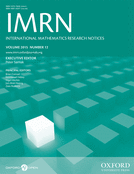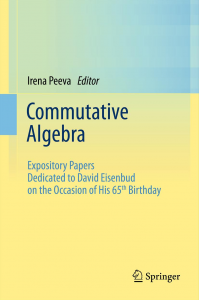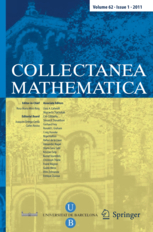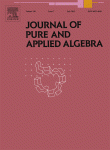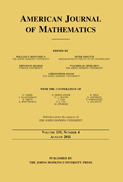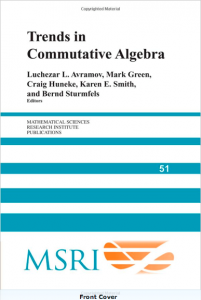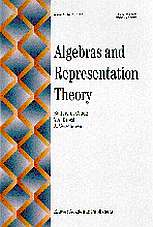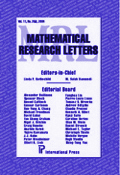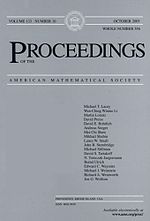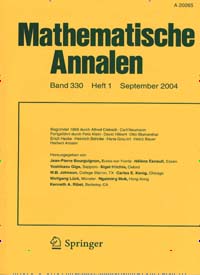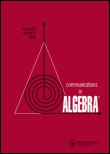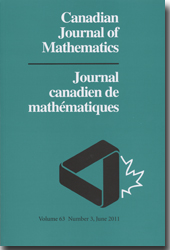
Download
Abstract:
For a commutative local ring R, consider (noncommutative) R-algebras Λ of the form Λ = EndR(M), where M is a reflexive R-module with nonzero free direct summand. Such algebras Λ of finite global dimension can be viewed as potential substitutes for, or analogues of, a resolution of singularities of Spec R. For example, Van den Bergh has shown that a three-dimensional Gorenstein normal C-algebra with isolated terminal singularities has a crepant resolution of singularities if and only if it has such an algebra Λ with finite global dimension and which is maximal Cohen–Macaulay over R (a “noncommutative crepant resolution of singularities”). We produce algebras Λ = EndR(M) having finite global dimension in two contexts: when R is a reduced one-dimensional complete local ring, or when R is a Cohen-Macaulay local ring of finite Cohen-Macaulay type. If in the latter case R is Gorenstein, then the construction gives a noncommutative crepant resolution of singularities in the sense of Van den Bergh.
Notes:
I started working on this paper at MSRI in Spring 2003, after a series of conversations with Ragnar-Olaf Buchweitz. We spent hours talking about Auslander’s work on representation dimension, the McKay correspondence and particularly the work of Ito-Nakamura and Bridgeland-King-Reid, Van den Bergh’s recent preprints on noncommutative crepant resolutions of singularities, Lipman’s work on Arf rings, and a whole circle of ideas I hadn’t encountered before. In the end it turned out that Osamu Iyama had beaten me to the punch on one of the main results of the paper (the case of dimension one) in “Rejective subcategories of artin algebras and orders“, though my result gives information that his doesn’t (and I understand mine) The other main result probably raises more questions than it answers, but it is a nice bridge from the topic that I’ve been working on for the last several years to several new ones. This is probably the paper that I’ve learned the most from writing.
Errata: There are several small-to-medium errors in the paper; thanks to Hailong Dao, Igor Burban, and Lucho Avramov for pointing them out.
The proof of Proposition 8 does not work for complete local rings of mixed characteristic that are not domains. Such a ring need not contain a regular local ring over which it is a finitely generated module. Since finite CM type implies isolated singularity, as long as the dimension is at least two this is no problem. For dimension one, on the other hand, this argument fails. (Question: if $R$ is a complete $p$-ring and $A = R[[x]]/(px)$, does $A$ have finite CM type? It’s known that $A$ contains no complete RLR with the same residue field as $A$, over which it is module-finite.) Luckily, Iyama’s results in dimension one are more than strong enough to rescue the statement of Prop. 8 in that case.
In the discussion in section 3, I falsely assert that “Theorem 6 implies that if R is Gorenstein of finite CM type and dimension 2 or 3, then R has a non-commutative crepant resolution”. In dimension 2, this is correct, but fails in dimension 3. A counterexample is already in Van den Bergh’s paper “Three-dimensional flops and noncommutative rings”: the 3-dimensional A1 singularity has no non-commutative crepant resolution. It is apparently well-known to geometers that, among the 3-dimensional simple singularities, only A2n+1 and D2n have crepant resolutions.
Bibtex code:
@article {MR2310620,
AUTHOR = {Leuschke, Graham J.},
TITLE = {Endomorphism rings of finite global dimension},
JOURNAL = {Canad. J. Math.},
FJOURNAL = {Canadian Journal of Mathematics.
Journal Canadien de Math\'ematiques},
VOLUME = {59},
YEAR = {2007},
NUMBER = {2},
PAGES = {332–342},
ISSN = {0008-414X},
CODEN = {CJMAAB},
MRCLASS = {16G60},
MRNUMBER = {MR2310620},
}

